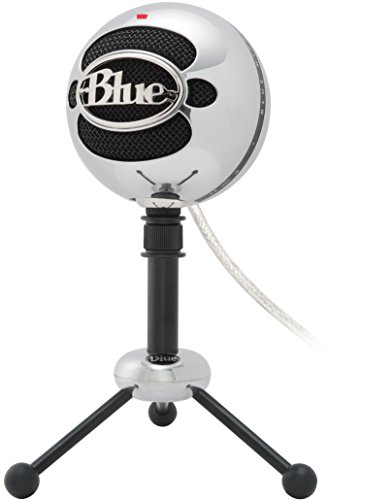How To Increase Blue Snowball Mic Volume
This creates a sound loop that gets louder and louder until you disconnect the headset. Mic making buzzing noise xbox one. Very high volume settings may cause noise from the speakers to be picked up by the microphone. As such, you should lower the volume of your headset by pressing the 'volume down' button on the adapter.Another source of the problem may come from someone else in your Xbox Live chat room.
Remove background noise, turn your mic off automatically while not speaking or add gain if its volume is too low. All this can be done in just a few steps with OBS-Studio.I will show you how to install the Mic DSP plugin to get a noise suppression filter and then how to configure your microphone in OBS-Studio to use the 3 mentioned filters.

I bought a Blue Snowball Ice recently, the one without the switch on the back. I'm sure the first attempt and it seemed to work fine and was clear. After unplugging and reconnecting all records. Apr 20, 2013 Hello same issue with AT2020 it wont load drivers just sit in in device manager, also Blue Snowball Ice, but that one get recognised however recording volume is low and almost unusable. I have tested the both USB microphones on the same system in windows 7 where it works like charm, also Mac OS have no issues.
Noise Gate and Gain filter come right with OBS but you will have to grab and install the Mic DSP Plugin.
And you might also need the Visual Studio Redistributable. Just grab both the x86 and x64 version and install both.
Then open the downloaded DSP Plugin zip file and extract its content directly into the main OBS-Studio folder. If you used the installer that would be:
C:Program Files (x86)OBS-Studio
It will ask you if you want to overwrite the existing files and it will ask you for administrative permission, say yes and accept the administrative permission.
Now we can start OBS-Studio and if you have not done so yet, go into the configuration and set up your Microphone there. Settings -> Audio
The 'default' setting will often work right away but you can also select your Microphone and Desktop Audio Device in the dropdown if you prefer to do so.
Push to mute and Push to talk can also be enabled and configured for each active Audio source in this screen, the Hotkeys are then configured under Settings -> Hotkeys. (Capture Cards and other audio sources will also show up in this list)
But now lets add the filters to our Microphone. In the Mixer section click on the cogwheel of the Audio Device you want to add the filters to. In my case the 'Mic/Aux' device:
How To Increase Blue Snowball Mic Volume Chart
- Noise Suppress
- Remove background noise
- Suppress Level (dB) - lower dB Value=more suppression
- Start on -10 and go down up to -60 until the background noise is gone
- Gain
- Increases the Input
- Gain (dB) - negative Values will lower your Audio Input while positive Values will increase it
- Do some tests by recording your Audio Input and checking the video to make sure no clipping occurs because of too audio high volumes.
- Noise Gate
- Turn the Microphone off if no one is talking
- Close Threshold
- When the mic drops below this volume, the noise gate will turn off the microphone
- Open Threshold
- When the mic goes above this volume, the noise gate will turn on the microphone
- Attack time
- How long it takes for the mic to go from off to on, as a fade in.
- Hold time
- How long the mic should stay on after the volume has dropped below the close threshold.
- Release time
- How long it takes for the mic to go from on to off, as a fade out.
- In most cases configure your Close Threshold first (it always has to be lower as your open Threshold). First do not talk and see if the Microphone inputs any Volume in OBS, then increase the Close Threshold until the Microphone input stops.
Now start talking and see if your Open Threshold is correct. You should see the green bar moving, meaning your voice comes in. You can then increase the Open Threshold until the Microphone stops showing input in OBS. Then slightly lower it again and you should have a good value.
- Noise suppression
- Noise Gate
- Gain
Always do a test recording or test stream after you configured your audio settings. Make sure no clipping occurs and that your overall input volume is not too high or too low.